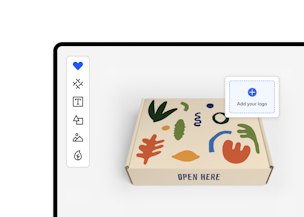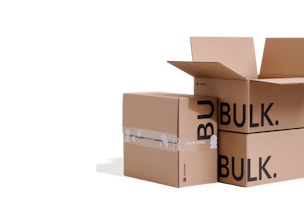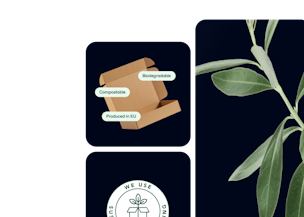Podcast: The Jetpack Ep. #3 – Planting Trees with Louis Lagoutte from One Tree Planted
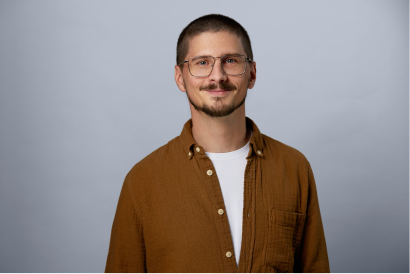
Subscribe to stay updated
You're now subscribed!

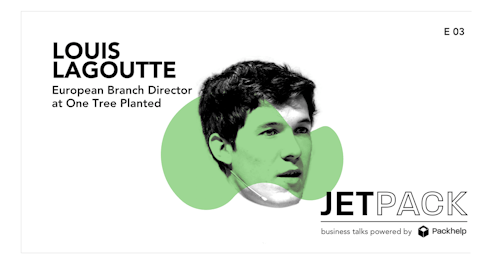
In this new episode of The Jetpack, host Kajetan Wyrzykowski got a chance to talk with Louis Lagoutte, the European Branch Director at One Tree Planted.
One Tree Planted is an organization dedicated to planting trees and reforestation projects around the world. As part of Packhelp’s journey into sustainability, we recently partnered u with One Tree Planted to give you the chance to plant trees with your packaging orders.
With sustainability becoming a so important not only in the business world but also in people’s daily living, Louis sat down to explain to us the importance of trees and how each one can help save the environment. We also got to learn how packaging and other industries play a role in the lifecycle of trees.
Listen to the full podcast below.
If you’d like to have a sneak peek, take a look at the shortened version of the conversation.
Shortened Transcription of The Jetpack Episode 3 with Louis Lagoutte
Kajetan Wyrzykowski: Tell us about yourself Louis, and how did you end up at One Tree Planted?
Louis Lagoutte: I essentially have always grown up in rural areas near forests, near nature, and I’ve always been very lucky to have a lot of wilderness around me. I think also in my education I had this one teacher and a class on environmental science. This teacher took us out to be in contact with the environment often to look at animals, to look at trees, and to look at all of these plant species, as well as rivers, mountains, and how everything is interconnected and how important it is to help these systems stay in balance. Ever since I’ve been interested, I’ve been passionate about making this area where I want to make a mark.
Then I stuck with it and I think I’ve also been quite lucky with the opportunities I’ve had. They’ve enabled me to work on projects which are centred around conservation, sustainability. Some times more directly, very hand on. Other times as a sie part to my main job.
It all started when I was very young. A lot of people know at a young age if they care a lot about the environment. I also believe that the generations to come are going to be even more passionate about it.
Kajetan: Prior to our call I did tiny research on you and I found out that before joining One Tree Planted you already worked in the area of sustainability as head of sustainability and social impact. That’s not the only background you have in this area. Could you tell me more about how these previous jobs prepared you more for the journey with One Tree Planted?
Louis: Absolutely, so my job before I started at One Tree Planted was working as Head of sustainability and social impact for a social enterprise which was based in South America, In Ecuador, and it was a company which produced a Tea that was only found in the Amazon Rainforest. I was working very closely with indigenous communities to produce this tea in an organic way to encourage this particular product to be grown in an agroforestry system.
So encouraging landowners instead of cutting down all their land and cluing it for cattle or for other crops to create a mixed system with many species which still kept biodiversity and still retain lots of the ecosystem services, which forests have, but would still be able to provide them with an income.
It was great because when I was out there we actually carried out a reforestation project a small one. But it was through looking for funding for this project that I came across One Tree Planted. And we applied to One Tree Planted for this project, they funded to project and we stayed in close contact and I decided that wanted to work for One Tree Planted. Here I am today 3 years later and it’s been a great journey.
Kajetan: It’s already been 3 years!
Louis: Yeah! There was a time when I was doing both and One Tree Planted was growing. But particularly in the last 2 or 3 years, we’ve grown a lot. In the year and a half, we’ve gone from a team of around 5 people to 25.
Kajetan: Since we are already touching this topic of One Tree Planted and I’m not sure if everyone listening here will instantly know what One Tree Planted is. Could tell us what exactly is it that you guys do and how the organization works?
Louis: At One Tree Planted, we’re a nonprofit with a very simple mission. That mission is to plant trees.
The way that it works is that we set up a very simple model where individuals or businesses can donate. Even schools can get involved to plant trees and to donate to reforestation projects.
We don’t actually go out and plant the trees ourselves. We’re funding projects all over the world because very often you have very fantastic projects with fantastic people involved, but they don’t necessarily have the capacity to go all over the world and fundraise. IT takes a lot of their time. So we’re able to come in and fund these projects to commit to them at scale, which means there can be more impact on a longer-term.
For example, in the United States, we work with the United States Forests Services to carry out reforestation projects there. Especially where there have been wildfires. In South America, we work with a range if different indigenous rights organizations, environmental organizations, charities to carry out these projects.
We essentially are the connection between the projects on the ground and the businesses and individuals who want to have an impact but don’t have that c0nnection to the actual organizations that are directly planting trees.
Kajetan: After reading some parts of your website, I stumbled across the section that really got my attention. There were things like how trees help reduce violence and how they with reducing speeding cases in cities. How did you guys figure these facts? Which fact was the most mind-blowing for you? For me it was the violence reduction, I would’ve never thought of that.
Louis: There’s a lot of research and there are some really awesome organizations who do fantastic work looking into the benefits of trees. Especially in an urban setting. With that data, it’s easier to lobby policymakers, politicians, local councils and governments to create urban reforestation projects to plant trees in cities.
Another one is the effect which is more important, as the earth warms, our cities get warmer and populations urbanize more, is the cooling potential of trees. When you have cities with a lot of forest cover, a lot of trees it really decreases the amount of energy that has to be spent, for example on air conditioning. It cools the air at a lower level, creates a lot of shade.
But also, what I find the most interesting is not necessarily the facts of trees themselves, but also forests as ecosystems. Once you have an entire forest ecosystem it actually plays a major role in climate regulation.
For example with the amazon rainforest people believe it’s named like that because it rains a lot. It’s absolutely true, but also places with a similar latitude are often very dry. The reason is, when you have a rainforest, what it’s doing is it’s actually creating its own weather.
These forests retain moisture and then through all the biomass release it slowly, creating humid air, clouds, precipitation. It then slows down water and creates a cycle where the water is reabsorbed and released back into the air and soils, instead of just running off as it would in other places.
That’s an incredible impact, and it’s also encouraging to know that if we plant trees on a vast scale we’re looking at landscape sized restoration and we can really improve habitats, you can increase rainfall, you can help farmers and repair whole ecosystems.
On the other hand, what this does mean is that there is a risk that places such as tropical rainforests when you’re cutting down trees in these places, you’re not only losing trees but also losing the engine that is creating this whole climate. In the long term, you’re creating a dryer, hotter microclimate which then makes it more difficult for forests to recover.
In the end, it ends up being even harder to grow crops which is why the trees were cut down in the first place. It adds to the importance to why we need to preserve it. They provide this key ecosystem service,
Kajetan: I was also wondering, how exactly do you choose locations to plant trees?
Louis: It’s a very good point about the fact that it is a global problem. But at the same time, there are areas that have seen a net gain in forests.
For example Europe. The vast majority of forests in Europe are growing and recovering. Countries like France and Germany have increased their tree coverage massively. A lot of that though is not necessarily because people in Europe are taking the right steps, but its because we’ve outsourced a lot of our production and agriculture to parts of the world which are then suffering from deforestation and environmental impacts.
The Amazon gets a lot of attention because it is so vast. The scale of it means that large parts of it are relatively untouched and have biodiversity to be preserved, which is also a human aspect of a living community in the amazon whose way of life could be threatened.
But also, tropical forests, for example, the Congo, it’s gigantic and creates a weather system that essentially provides water to the whole of northeast Africa by driving in moisture from the ocean.
Indonesia is probably one of the most critical battlegrounds when it comes to deforestation Due to palm oil. Agriculture tends to be the main driver.
We have projects all over the world. Even though all projects involve planting trees, they also impact many of the UN social development goals.
To give an example, our projects in the Amazon are there to preserve Biodiversity, but also to preserve a livelihood. It’s also really important when working with communities on the ground to create a system where they can create a sustainable living from the land. That directly impacts the social development goal of improving quality of life and generating incomes.
Other projects involve water conservation and address water scarcity to reduce water waste throughout the year.
Others are also very biodiversity focused. For example, some of our projects in Australia involve creating wildlife corridors between areas of high biodiversity.
We have these projects all over the world and when we choose were looking at some key indicators. We want to make sure that the species planted are not monocultures.
We don’t want to be creating rows and rows of the same species and plantations. The principle we work on is forest-landscape restoration. So we tend to look not only at the trees but at the forests and the landscapes and how to have a more productive landscape that’s abundant with nature and species.
That involves more than just planting trees. It involves educating communities in many different aspects.
We look at projects being very holistic in their view on how to address environmental problems. Also, we’re looking at how the local communities are involved in the long-term viability of the project. They have to really be feeling the benefits of it.
We also look at who carries out the project, who owns the land. Sometimes it’s public land, sometimes it’s private land, but it’s always important to know these things.
With regards to how we choose the regions in which we work, we look essentially to plant trees everywhere. Some areas get a lot of attention. You can always see that in the donations that come in and in the demand from people, for example, projects in the amazon or Australia.
But as you said, there are countries, for example, Haiti which is a starting example of deforestation. You can even just go to Google Earth to see images of the border between the Dominican Republic and Haiti and you’ll see a straight line on which one side forests and the other side it’s just dry land.
Sometimes it is the countries that receive the least attention that needs help the most.
We try to address that and plant trees in as many different places as possible.
Kajetan: You touched a very interesting topic for me. When I first that the Collaboration of Packhelp with One Tree Planted was going to be established I was pretty excited. But before I started working at Packhelp, I had this prejudice that packaging itself is the main reason why trees are cut. But as I researched, I learned that these things like palm oil have the biggest impact. In your opinion, what areas do you think cause the biggest impact on forests?
Louis: I think at times it’s more effective to think of this as cutting down trees, which is the problem, but more in the terms of land use.
Timber wood is a wonderful resource. It’s natural, it’s takes carbon out of the atmosphere, It can be used to build a house, for food, it can be used for so many things. It’s not like using wood as a resource is bad, if anything it’s actually better than other materials.
It is a matter of using it responsibly. If we look at land use rather than cutting trees, you realize that the problem is not necessarily that trees are being cut down but that the land is being turned over to a different use.
For example cattle farming, where these forests will not regenerate. There are many industries which do use wood and use it very responsibly and often it is businesses who need wood as a resource who are the most careful to plant and use wood sustainably.
They need the resource for the long term viability of their business. This the more in countries that have a strong institution as well.
There is responsibly sourced paper, cardboard and products which come from sustainably managed forests, which actually help to persevere them and grow the forests cover we have.
Before these trees are cut, they’re not just clearing but thinning, and then they have a chance to grow back. The whole time this forests is provided with an ecosystem and serves a purpose. And of course, replanting afterwards is key.
Kajetan: Let’s move to your business. You said that over the last year you’ve grown exponentially and have employed lots of new people. I want to ask 2 things. How many people do you see are trying to get into the planting trees business? And second, how many partners do you have and how do you choose brands to collaborate with?
Louis: On the first part, it is an industry that is growing and it’s seeing a lot of new movers and shakers. We are among that field. We do things a bit differently than traditional organizations.
I also think one has to be wary at the moment. There are a lot of opportunistic organizations that are profit-oriented which is okay, but there are so many non-profits working in the area already that its sometimes frustrating to see new organizations be “oh everyone wants to give money to plant trees, we can make money out of it”.
In fact, when people give money, they want to have the maximum impact, then they should give to non-profit organizations.
Again it’s also given the opportunity t generate different models which is helping to generate a lot of awareness and traffic to these causes. There’s definitely a lot going on right now.
With regards to our partners, we have several thousand partners. That’s because its a whole range. Some of our business partners have worked with us from the beginning, for example, a Yoga teacher with a small yoga studio who wants to plant a tree for every class they give.
And then, on the other hand, we have multinationals who want to support projects, for example, Netflix and Mastercard.
Essentially we want to make sure that when companies are doing this it is part of a value change within them and their organization.
Often it is, and that’s why it’s really important to do what Packhelp is doing, which is to tie it to the metric of success within the business model, for example, every order plants a tree.
It shows it’s not just a monetary gesture. It’ based on the success and it means that if the company grows then a lot more tress will get planted.
One example of this is a partner we have from Switzerland, they make hats and clothes, and were very clear that every product they sell plants trees. They’ve had great success.
They started out with us when they were very small and we were very small, and now they’re a really great brand doing great things.
It’s great to see that growth and that specific metric which they are going to stick to, a goal.
I think that’s what’s important in our partners, that they tie it into something they want to increase so that their impact can continue to increase.
Kajetan: We were actually really happy to see that ever since we launched our campaign and this collaboration with One Tree Planted, we didn’t even market this aspect of planting trees, we saw on the very first day many f our customers were choosing to plant trees. It was awesome and I was really surprised to see this. I was kind of expecting that unless we did something like a marketing campaign around it, there wouldn’t be much impact. We’re already planted hundreds of trees. It’s a fantastic sign that people really care about this initiative.
Louis: Absolutely! And there are also many studies being done about how consumers are increasingly looking for products and business that not only minimize their negative impact but aim to have a net positive impact.
Kajetan: On the other hand, I encountered an article not long ago that mentioned how planting trees is not really that beneficial for the environment. It argued that as a civilization, we grow and we need to change the planet as we evolve and we need to cut more change and grow more crops, etc.
I wanted to ask you about this, what do you think?
Louis: Planting trees has to done right in order for it to be effective. It has to be in the right places, and planting trees is not the solution everywhere.
In ecosystems which are meant to be grasslands, it should be left as grasslands. And grasslands play a major role in carbon absorption as well.
Planting trees should be focused on restoring forests in areas where they’re meant to be.
With regards to food production, the models of intensive agriculture, which we’ve become accustomed to, we tend to assume are the most productive in the sense of yield per hectare.
But there are many different models for agriculture, for example, models that involve permaculture, smaller scale, more people, growing mix of species, etc, these systems also have very high yields.
The difference is that a lot of these more sustainable systems require a lot of human labour. Some people see it as a challenge, in other ways it’s an opportunity in a time when people are increasingly concerned with automation.
Lack of work due to automation, it can be a time for people to back towards more sustainable models of agriculture and more people working with soil. People would be growing more food ad connected to food, the land and nature.
I think there’s an opportunity there.
But, in no way is preserving the environment inhibitive of humanity’s growth. I think they have to go hand in hand. All of our food and everything we depend on comes from systems in the natural world.
If we destroy the natural world, we will really feel it. That is the most dangerous.
Kajetan: There is a lot of discussion regarding COVID-19. I bring that up because the other day I saw a post where supposedly Coronavirus and the entire pandemic situation is going to push people towards more sustainable business models, circular designs, and in general a more sustainable way of living. Do you agree with that?
Louis: I think it has the potential to teach us a bunch of important lessons if we listen and learn. One of which I think, when in a time where a lot of companies are being forced to reduce the amount of travel that they do, they will maybe realize that a lot of it was not necessary.
On that way it can help set a new baseline. Flying is a large emitter of CO2 and business flights make up a large portion of all the passengers that fly worldwide. I think a lot of companies will realize they haven’t sent anyone to meetings, yet they are still able to operate with clients and partners.
In the same way with commuting. Particularly in Europe, I think most people who commute to work use public transportation or perhaps cycle. Bt I think in countries where you have millions of people driving their cars every morning, creating pollution and wasting 2hours a day just to get to and from work, people will now realize that by working from home they will increase their quality of work and of life. They can spend more time with their family, more time outside. Maybe we’ll see a shift towards that as well.
And many companies who were forced to make this shift they’ve maybe realized that it’s not that difficult and that it is possible to do things differently.
Kajetan: We’ve now reached the quick round of questions! Spill the first thing that comes to mind. What’s your one tip for any company who wants to become more sustainable?
Louis: Looking at your supply chains and where you’re sourcing products from. Are they using the best options? Are they sustainable? They need to look at their own practices and then if they do want to have an impact outside of that, they should try to do something tangible and use metrics. For example, protecting land, preserving species, getting people of bicycles. Whatever it is something which they can actually measure and evaluate the success of.
Kajetan: What’s the most incredible packaging you have ever seen of received?
Louis: I think it was probably for chocolate! I do like chocolate and I think it was a very beautiful chocolate from Ecuadorian organic and sustainable cacao. It had all these jungle animals in a very bright colour outlined in silver. It struck me as very beautiful. It captured the vibrant life and colours that you do find in the rainforest. I really liked the connection between the colours and patterns, and the origin of the product.
Kajetan: If you could meet anyone in the history of mankind, who would it be?
Louis: I think it would be Nelson Mandela who is one of my personal heroes and who I admire very much for his themes of reconciliation and forgiveness.
Kajetan: What is one tool you can’t imagine working without?
Louis: For sure videoconferencing. We have partners all over the world and it is amazing to just hear from a partner within minutes get on a call or see each other and they’re in the middle of the rainforest. Even though we’ve had it for 10-15 years, it’s still mind-blowing and great to be able to connect with partners and see places as well.
Kajetan: What’s the most sustainable company you have ever worked with?
Louis: I think the most sustainable companies I’ve worked with are companies that work with land and agriculture. For example the company I used to work for focused a lot on the conservation of land, enriching land and species, and working with communities. There’s a lot of agriculture companies doing fantastic work out there. Also the chocolate company I mentioned earlier. They’re companies that can help change the dependency on industrial agriculture and are the leaders in showing how we have have a maximum impact. At the end of the day, it all comes down to land, which is mostly used in agriculture. If we change that we can change how we treat the majority of the earth’s land surface.
Kajetan: Well thank you much Louis! It was a pleasure to talk to you and I also got the chance to learn a lot from you today on the importance of planting trees and the awesome work you guys do.
I’m also super happy about the collaboration between Packhelp and One Tree Planted going, and that our customer can plant trees, and together we can all do something good for the environment.
If there’s anything you would like to share with our listeners, the floor is ours.
Louis: First I would like to say thank you for having me on this podcast; it’s a pleasure to talk about these things. It’s also a pleasure to be working with Packhelp. I got the chance to meet your colleagues in person and there are a real enthusiasm and commitment to this and so I’m really looking forward to working together as long-term partners and hopefully getting a lot of trees in the ground. And also you can learn more about One Tree Planted and planting trees at our site, we’ve got some incredible resources there about projects all over the world.
And you would like to order your packaging, remember to use our special code: JETPACK
Interested in customized packaging? Tell us what you need and request a quote. We will get back to you in no time!
